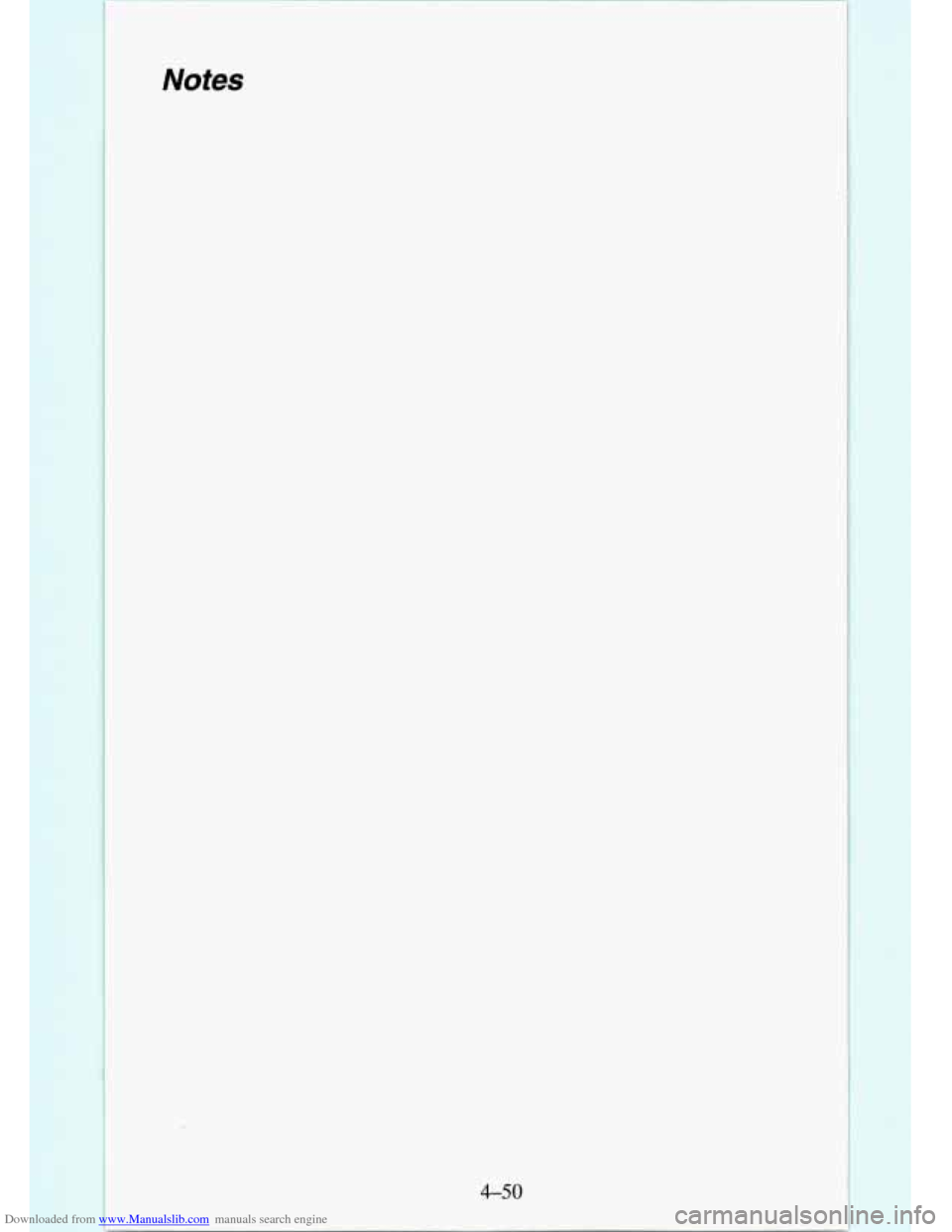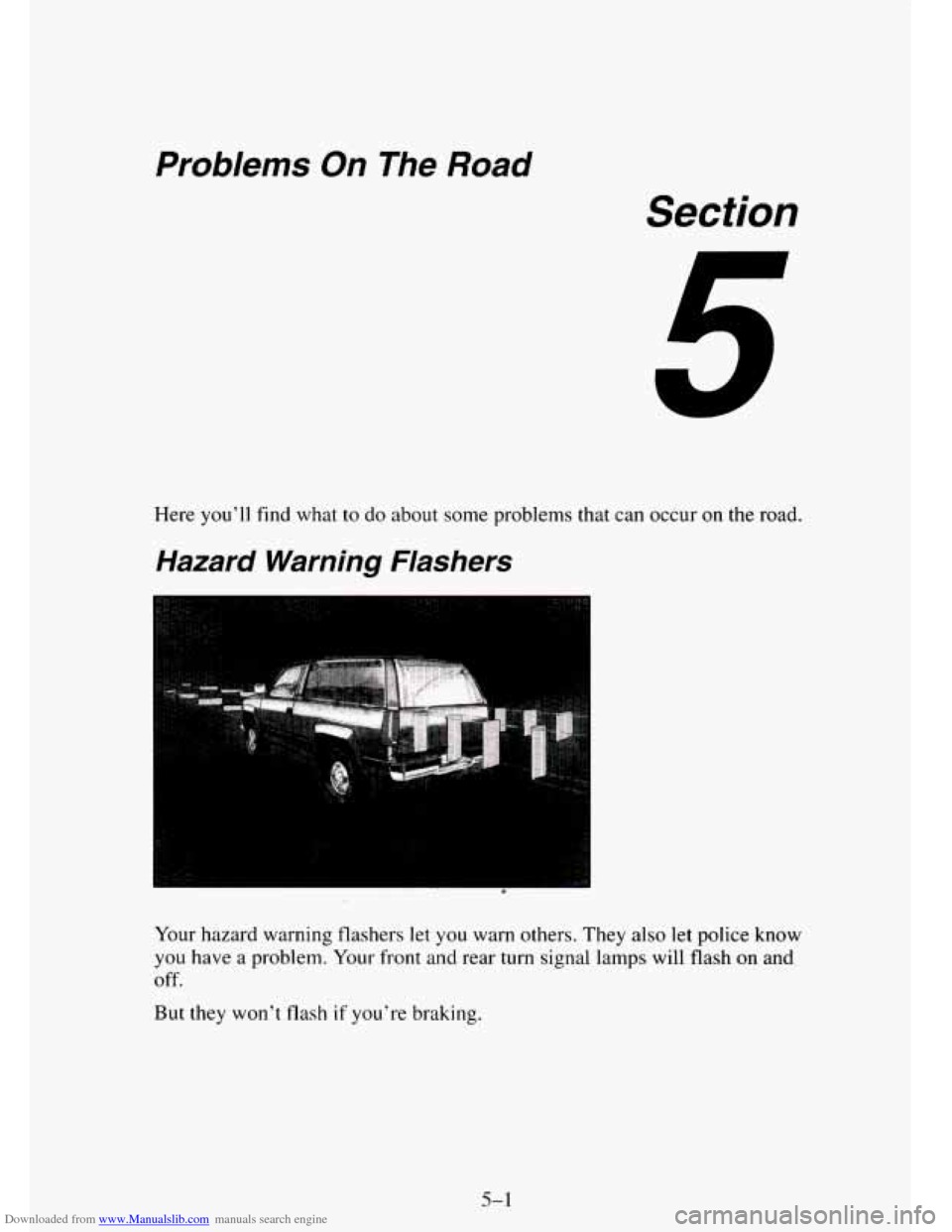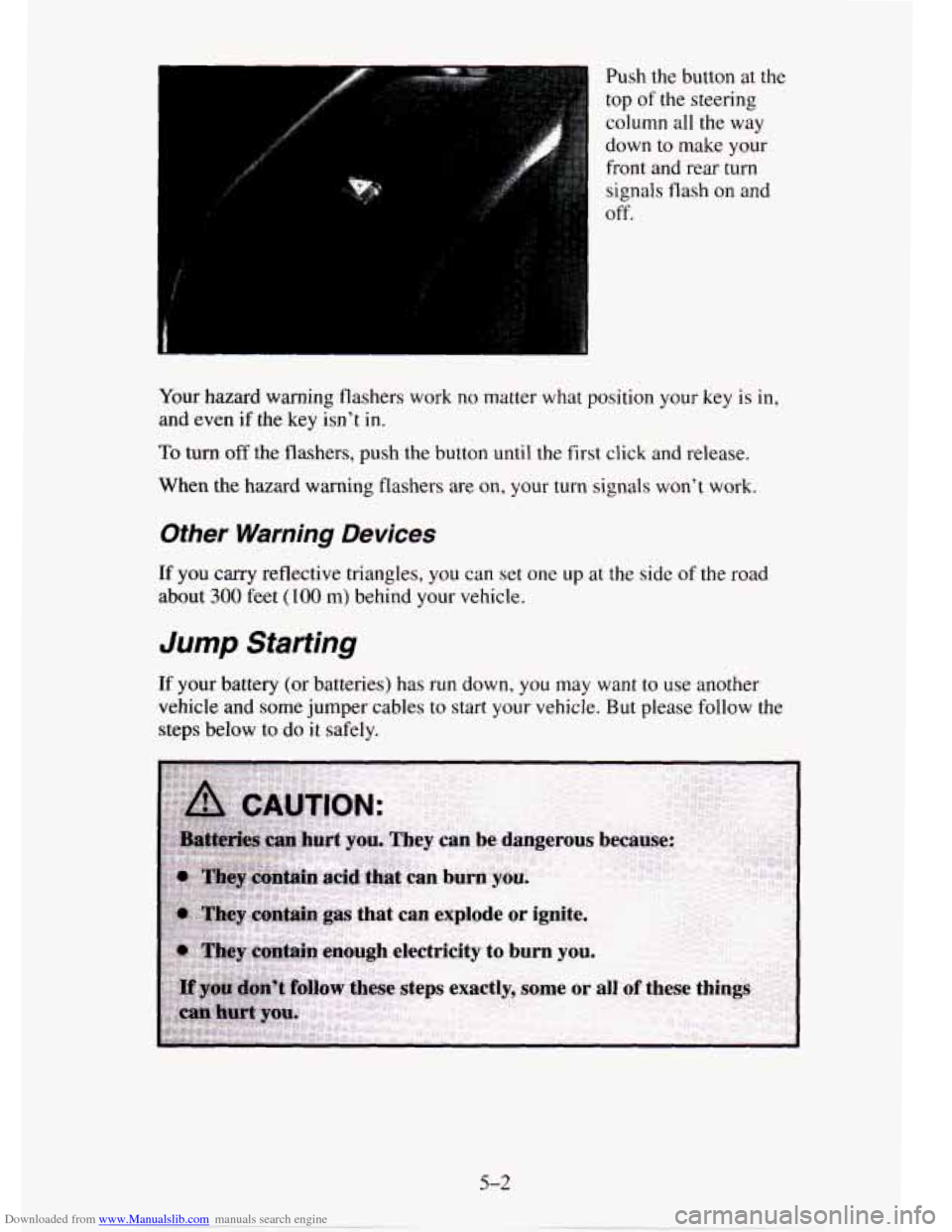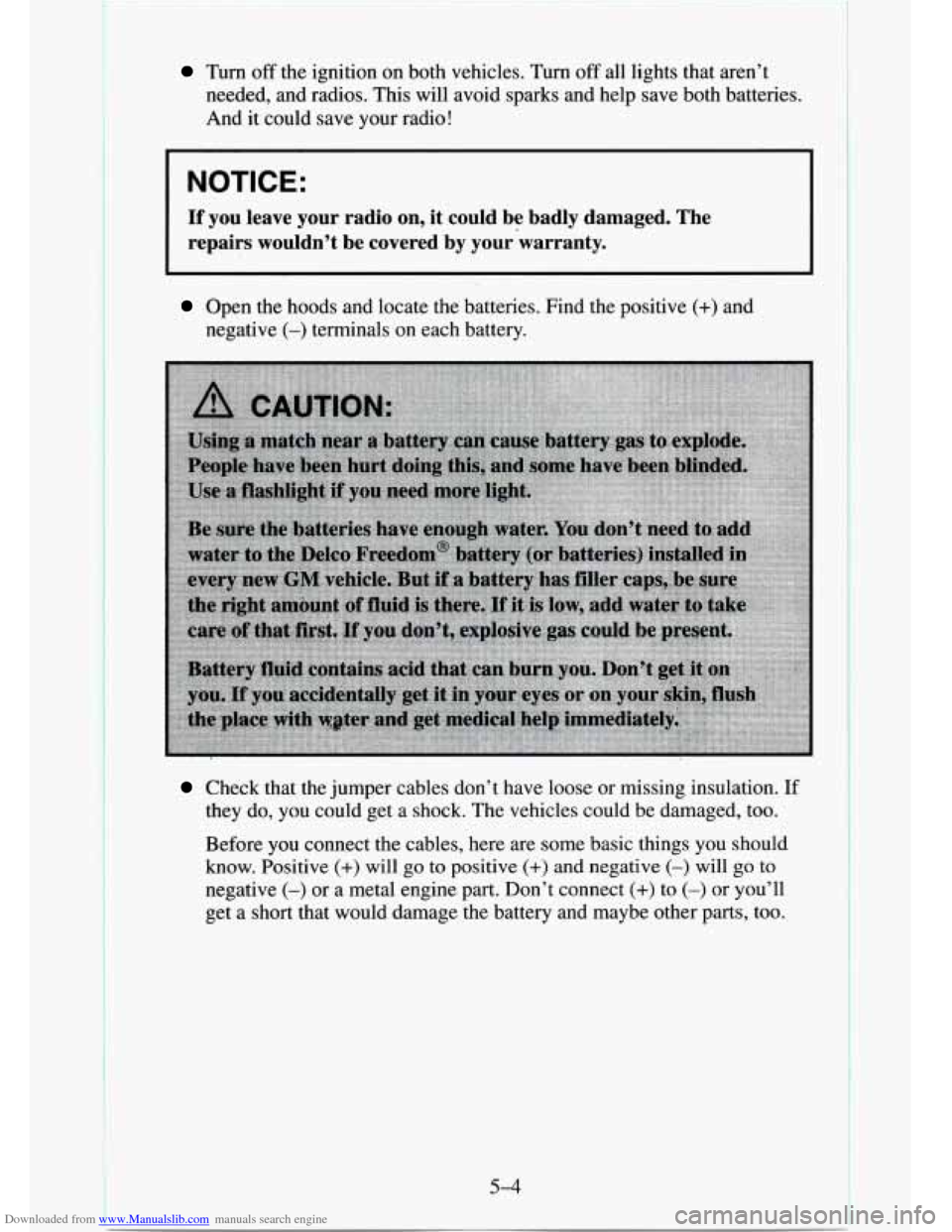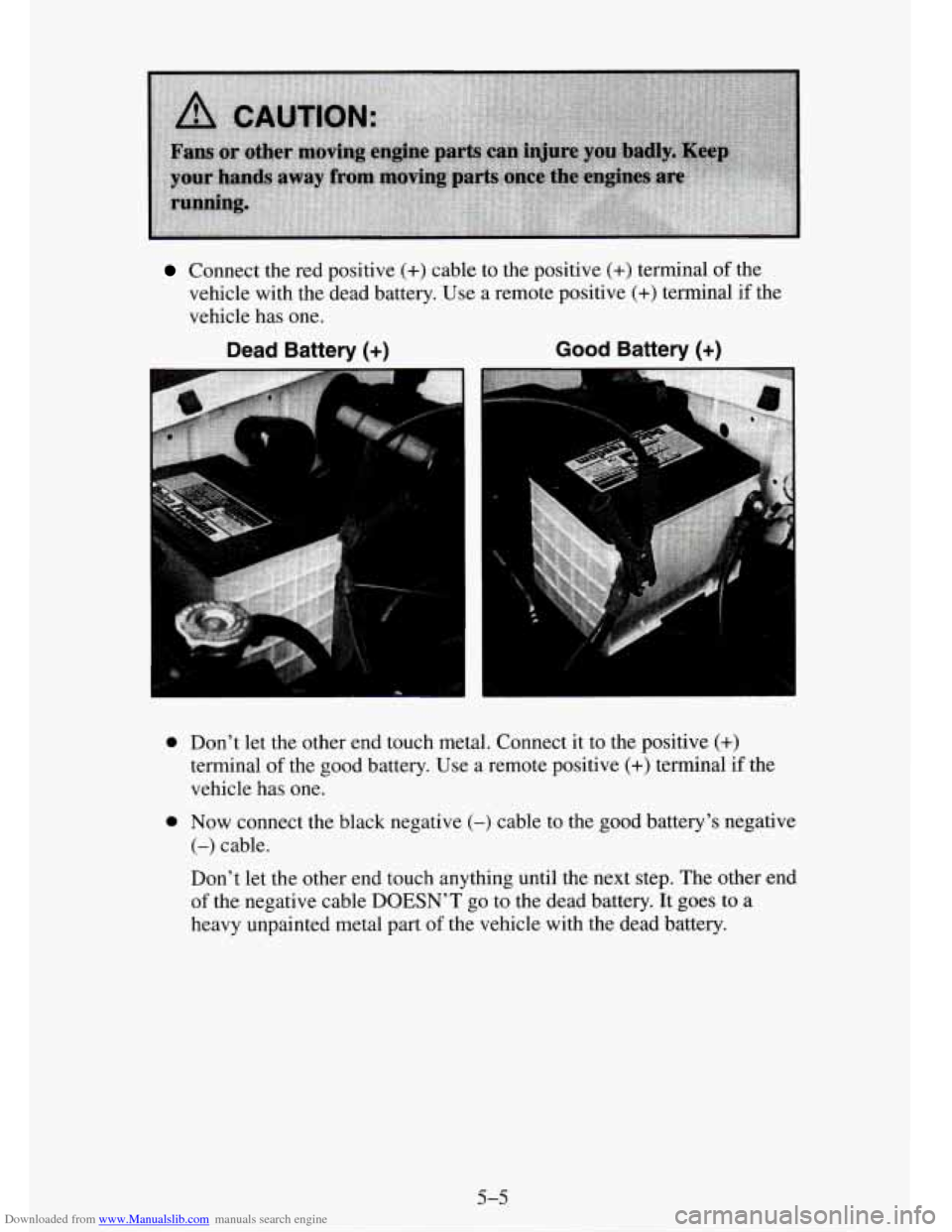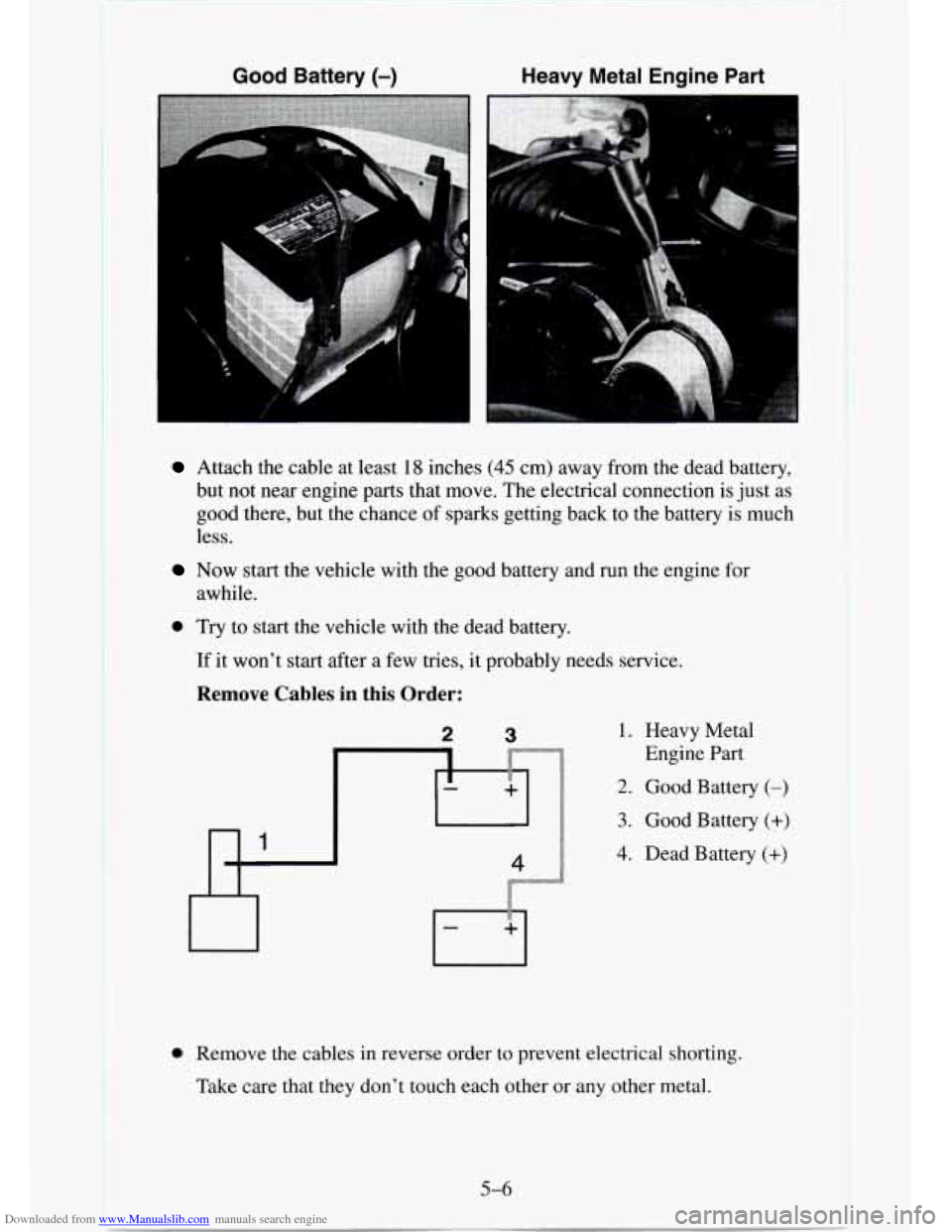CHEVROLET TAHOE 1995 1.G Owners Manual
TAHOE 1995 1.G
CHEVROLET
CHEVROLET
https://www.carmanualsonline.info/img/24/8323/w960_8323-0.png
CHEVROLET TAHOE 1995 1.G Owners Manual
Trending: jack points, horn, change time, audio, maintenance, engine coolant, service indicator
Page 231 of 486
Downloaded from www.Manualslib.com manuals search engine Notes
4-48
Page 232 of 486
Downloaded from www.Manualslib.com manuals search engine Notes
4-49
Page 233 of 486
Downloaded from www.Manualslib.com manuals search engine Notes
Page 234 of 486
Downloaded from www.Manualslib.com manuals search engine Problems On The Road
Section
Here you’ll find what to do about some problems that can occur on the road.
Hazard Warning Flashers
Your hazard warning flashers let you warn others. They also let police know
you have a problem. Your front and rear turn signal lamps will flash on and
off.
But they won’t flash if you’re braking.
5-1
Page 235 of 486
Downloaded from www.Manualslib.com manuals search engine Push the button at the
top
of the steering
column all the way
down to make your
front and rear turn
signals flash on and
off.
Your hazard warning flashers work
no matter what position your key is in,
and even if the key isn’t
in.
To turn off the flashers, push the button until the first click and release.
When the hazard warning flashers are
on, your turn signals won’t work.
Other Warning Devices
If you carry reflective triangles, you can set one up at the side of the road
about 300 feet (100 m) behind your vehicle.
Jump Starting
If your battery (or batteries) has run down, you may want to use another
vehicle and some jumper cables
to start your vehicle. But please follow the
steps below to do it safely.
5-2
Page 236 of 486
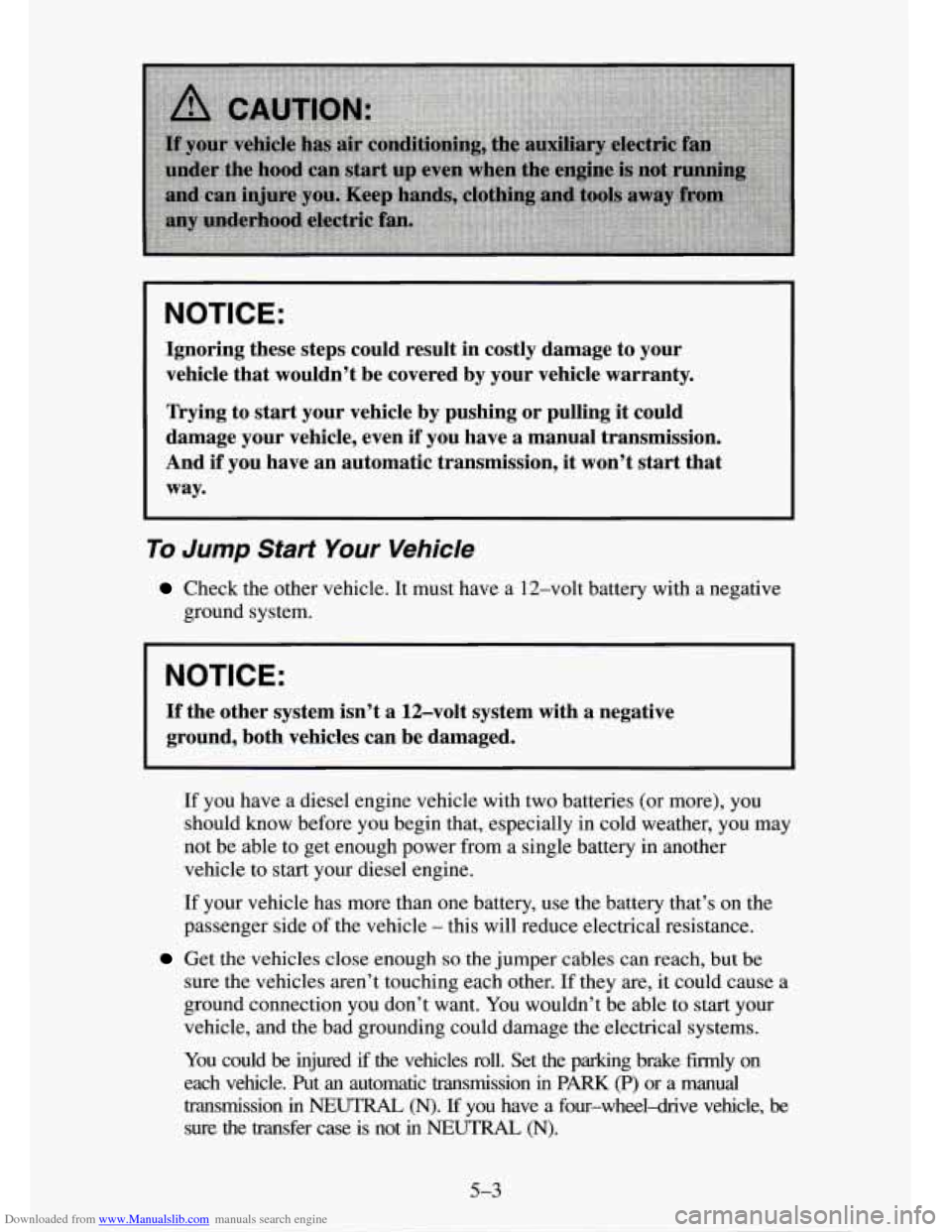
Downloaded from www.Manualslib.com manuals search engine NOTICE:
Ignoring these steps could result in costly damage to your
vehicle that wouldn’t be covered by your vehicle warranty.
Trying to start your vehicle by pushing or pulling it could
damage your vehicle, even if you have a manual transmission.
And if you have an automatic transmission, it won’t start that
way.
To Jump Start Your Vehicle
Check the other vehicle. It must have a 12-volt battery with a negative
ground system.
NOTICE:
If the other system isn’t a 12-volt system with a negative
ground, both vehicles can be damaged.
If you have a diesel engine vehicle with two batteries (or more), you
should know before you begin that, especially
in cold weather, you may
not be able to get enough power from a single battery in another
vehicle
to start your diesel engine.
If your vehicle has more than one battery, use the battery that’s on the
passenger side
of the vehicle - this will reduce electrical resistance.
Get the vehicles close enough so the jumper cables can reach, but be
sure the vehicles aren’t touching each other. If they are, it could cause a
ground connection you don’t want. You wouldn’t be able to start your
vehicle, and the bad grounding could damage the electrical systems.
You could
be injured if the vehicles roll. Set the parking brake firmly on
each vehicle. Put
an automatic transmission in PARK (P) or a manual
transmission in NEUTRAL (N). If you have a four-wheel-drive vehicle, be
sure the transfer case is not in NEUTRAL (N).
5-3
Page 237 of 486
Downloaded from www.Manualslib.com manuals search engine Turn off the ignition on both vehicles. Turn off all lights that aren’t
needed, and radios. This will avoid sparks and help save both batteries.
And it could
save your radio!
I NOTICE:
If you leave your radio on, it could be badly damaged. The
repairs wouldn’t be covered by your warranty.
Open the hoods and locate the batteries. Find the positive (+) and
negative
(-) terminals on each battery.
Check that the jumper cables don’t have loose or missing insulation. If
they do, you could get a shock. The vehicles could be damaged, too.
Before
you connect the cables, here are some basic things you should
know. Positive
(+) will go to positive (+) and negative (-) will go to
negative (-) or a metal engine part. Don’t connect (+) to (-) or you’ll
get a short that would damage the battery and maybe other parts, too.
5-4
Page 238 of 486
Downloaded from www.Manualslib.com manuals search engine Connect the red positive (+) cable to the positive (+) terminal of the
vehicle with the dead battery. Use a remote positive
(+) terminal if the
vehicle has one.
Dead Battery (+) Good Battery (+)
0 Don't let the other end touch metal. Connect it to the positive (+)
terminal of the good battery. Use a remote positive (+) terminal if the
vehicle has one.
0 Now connect the black negative (-) cable to the good battery's negative
(-) cable.
Don't let the other end touch anything until the next step. The other end
of the negative cable DOESN'T go to the dead battery. It goes to a
heavy unpainted metal part of the vehicle with the dead battery.
5-5
Page 239 of 486
Downloaded from www.Manualslib.com manuals search engine Good Battery (-) Heavy Metal Engine Part
Attach the cable at least 18 inches (45 cm) away from the dead battery,
but not near engine parts that move. The electrical connection is just as
good there, but the chance
of sparks getting back to the battery is much
less.
Now start the vehicle with the good battery and run the engine for
awhile.
0 Try to start the vehicle with the dead battery.
If it won’t start after a few tries, it probably needs service.
Remove Cables in this Order:
2 3 1. Heavy Metal
2. Good Battery (-)
3. Good Battery (+)
4. Dead Battery (+)
Engine Part
0 Remove the cables in reverse order to prevent electrical shorting.
Take care that they don’t touch each other or any other metal.
5-6
Page 240 of 486
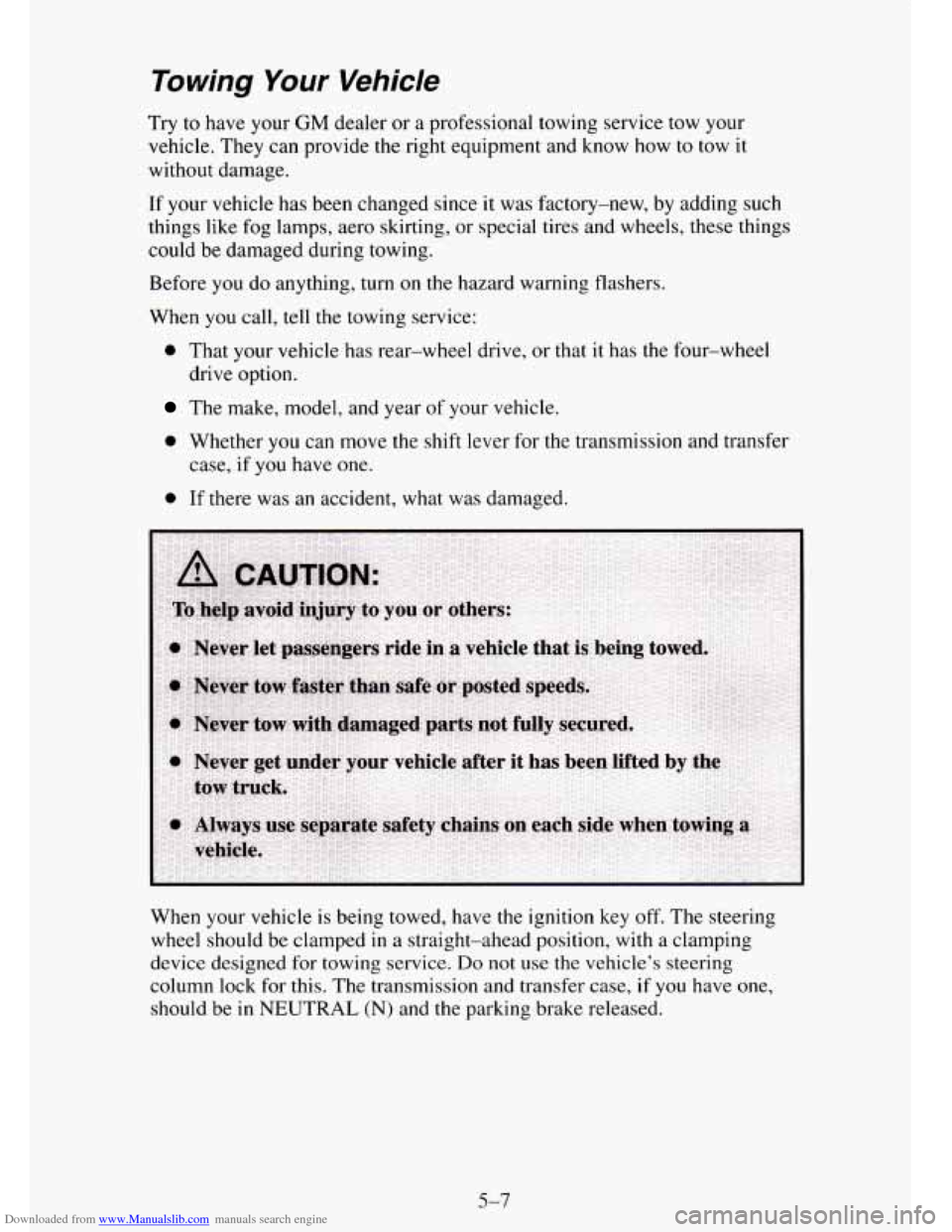
Downloaded from www.Manualslib.com manuals search engine To wing Your Vehicle
Try to have your GM dealer or a professional towing service tow your
vehicle. They can provide the right equipment and know how
to tow it
without damage.
If your vehicle has been changed since it was factory-new, by adding such
things like fog lamps, aero skirting, or special tires and wheels, these things
could be damaged during towing.
Before you do anything, turn on the hazard warning flashers.
When you call, tell the towing service:
0 That your vehicle has rear-wheel drive, or that it has the four-wheel
drive option.
The make, model, and year of your vehicle.
0 Whether you can move the shift lever for the transmission and transfer
case, if you have one.
0 If there was an accident, what was damaged.
When your vehicle is being towed, have
the ignition key off. The steering
wheel should be clamped
in a straight-ahead position, with a clamping
device designed for towing service.
Do not use the vehicle’s steering
column
lock for this. The transmission and transfer case, if you have one,
should be in NEUTRAL (N) and the parking brake released.
5-7
Trending: oil dipstick, oil filter, lock, automatic transmission, language, tire size, transmission oil


